Jack Shainman’s The School opened its fourth summer show at the end of May. On view through October 6 is a survey show of Radcliffe Bailey, entitled “Travelogue,” as well as a series of solo presentations by artists like Nina Chanel Abney, Math Bass, and Leslie Wayne.
Bailey’s show focuses on work made between 2006 and today. As he describes it, his practice has always had one foot in the past and one in the present. His work explores shared history, faith, and ancestry through the layer of objects, photographs, music, and other materials.
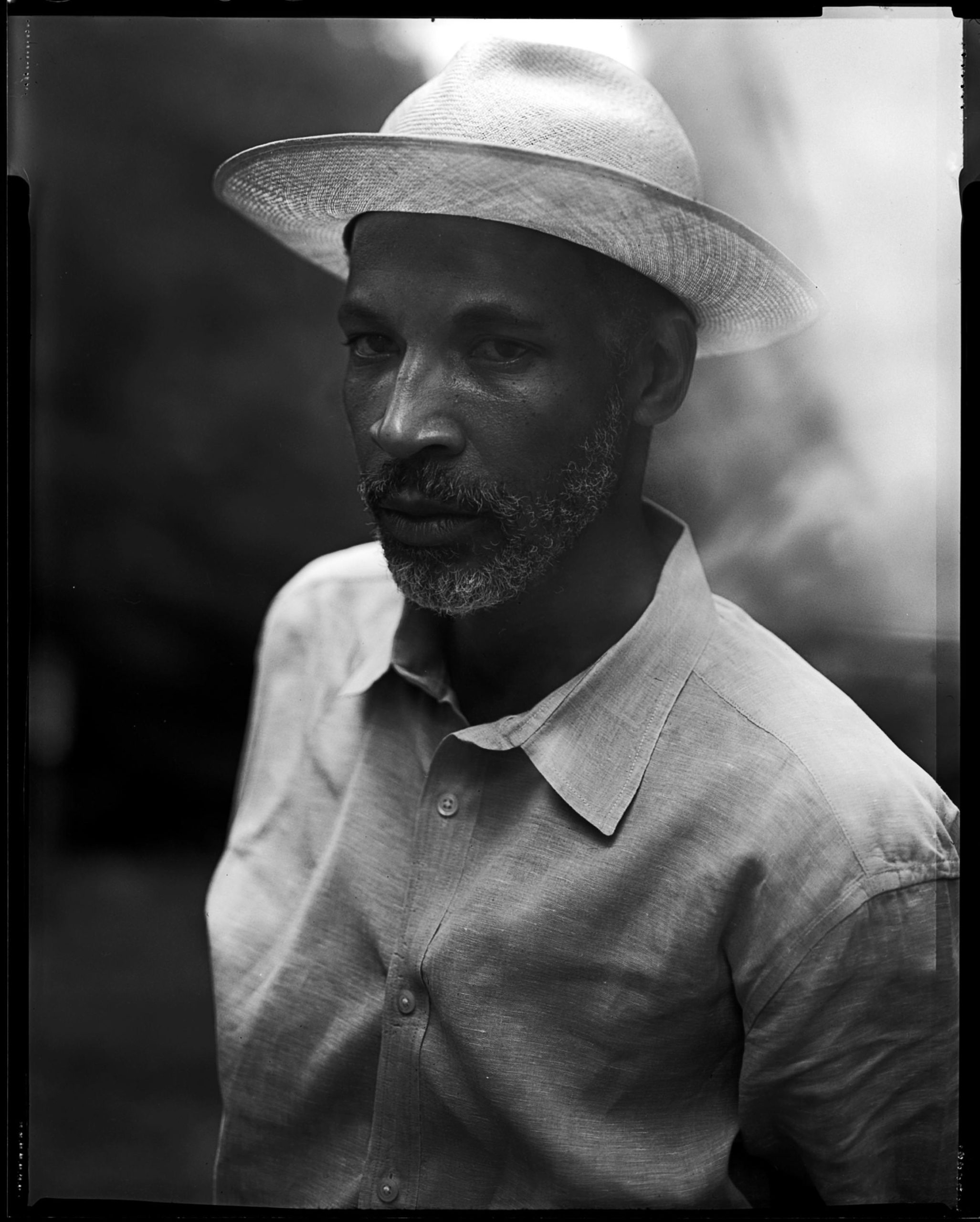
Portrait by LaMont Hamilton
Whitewall spoke with Bailey about the surreal, the spiritual, and memory as medicine.
WHITEWALL: Can you tell us about the earliest work we’ll see in “Travelogue”?
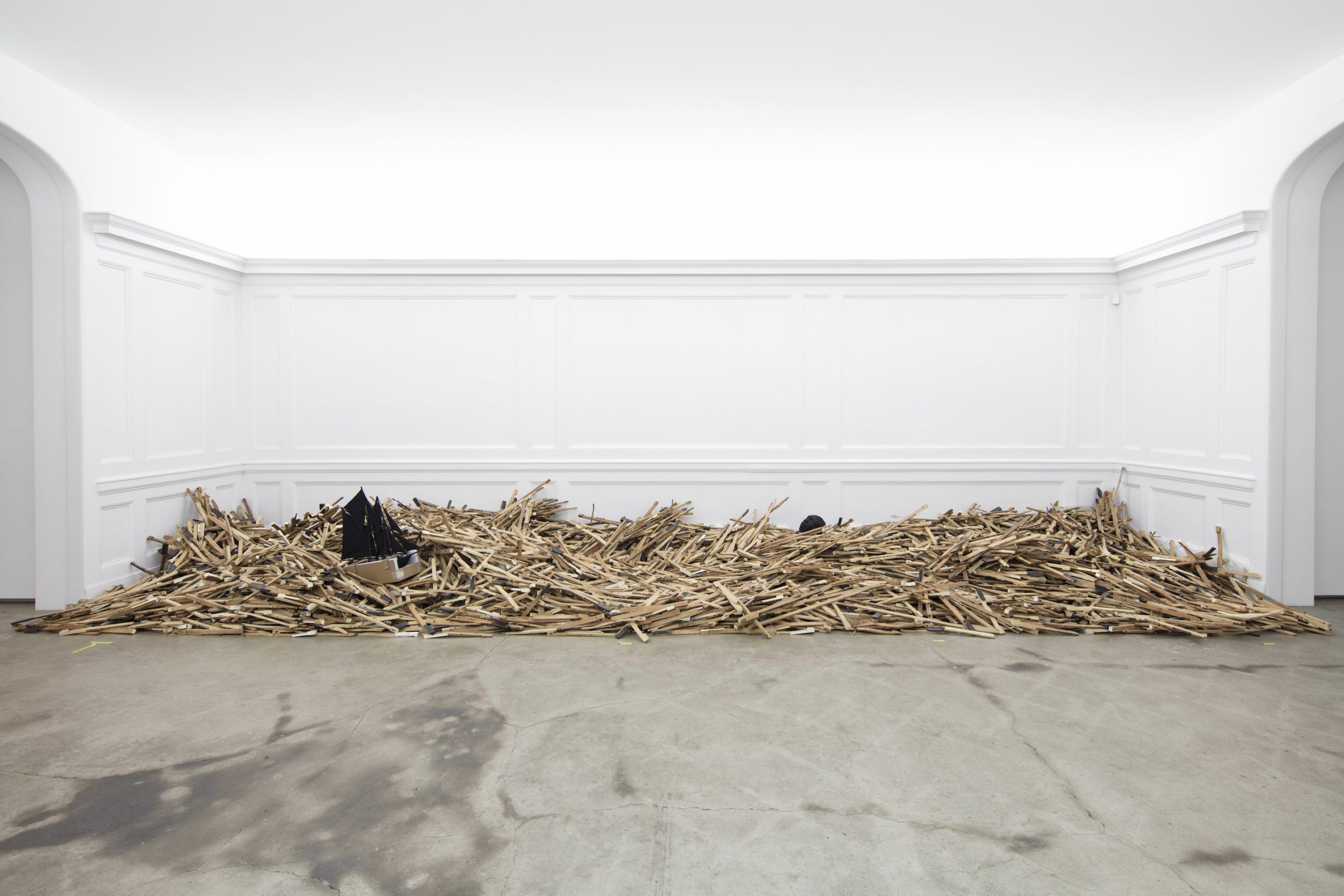
RADCLIFFE BAILEY
Windward Coast – West Coast Slave Trade
2009-2018
Piano keys, plaster bust, and glitter
Courtesy of Jack Shainman
RADCLIFFE BAILEY: The earliest work is a small cabinet piece from 2006. I refer to these as cabinet pieces because they’re based around medicine cabinets. The idea is that you use these cabinet works to access memory. Memory became the medicine for the piece.
I made this work shortly after testing my DNA on my mother’s side, which was the side I didn’t know much about at the time. I traced my mother’s lineage to Guinea and Sierra Leone, specifically to the Mende people. This 2006 piece was very personal, and I wanted to include marks and letters about my genetic code.
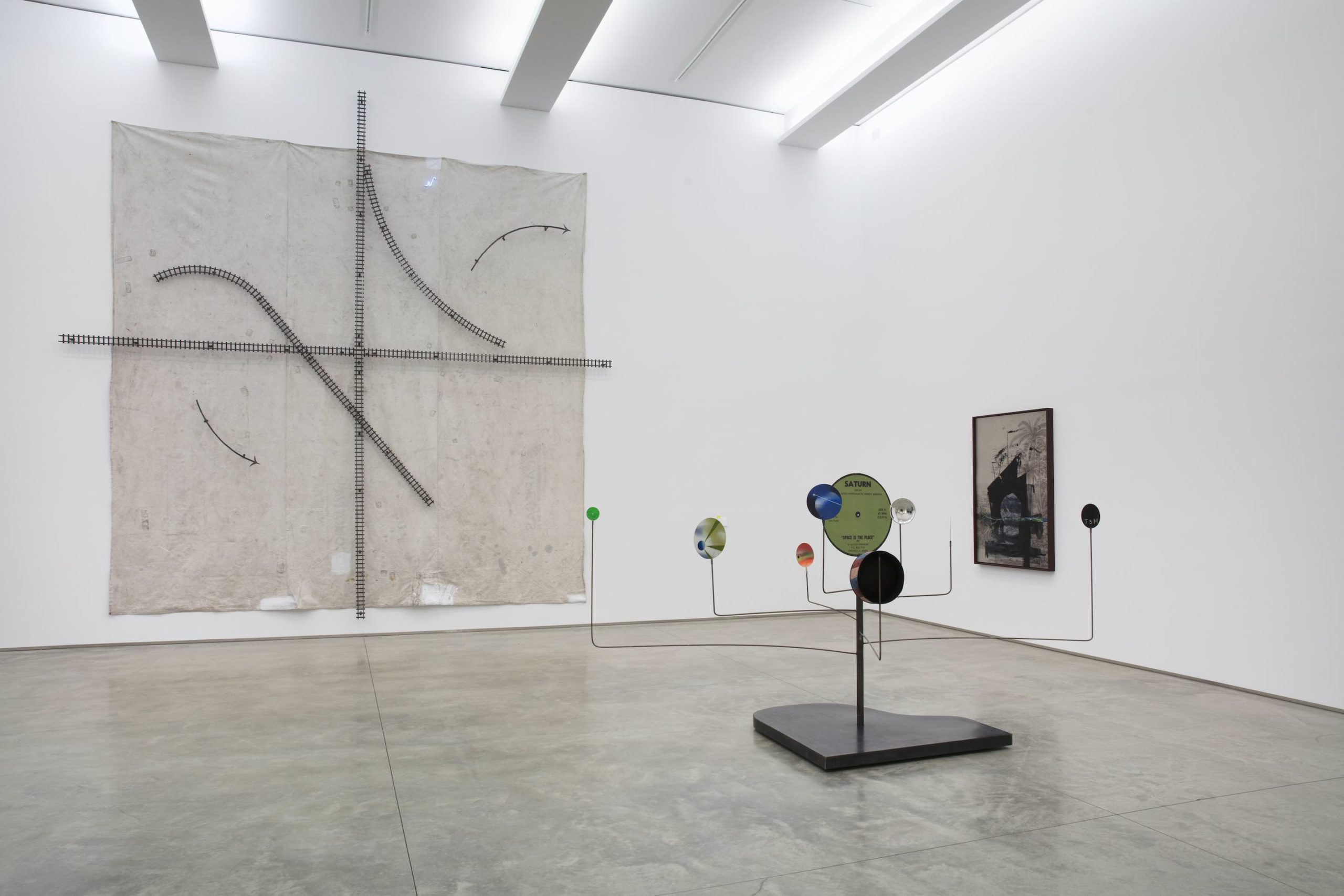
Installation view of “Travelogue” at The School
Courtesy of Jack Shainman
There’s a related piece in the show that is a minimal approach to the Mende mask, something I remember seeing as a kid at the High Museum of Art. Part of the practice for me in making this work was to wax the mask and create somewhat of a shine that relates to the patina that you see on African art; but also—I remember my grandmother used to collect antique furniture and would create a patina on some of the pieces. So there’s a reference to her, as well.
WW: Can you talk about how your practice has continued from that piece?
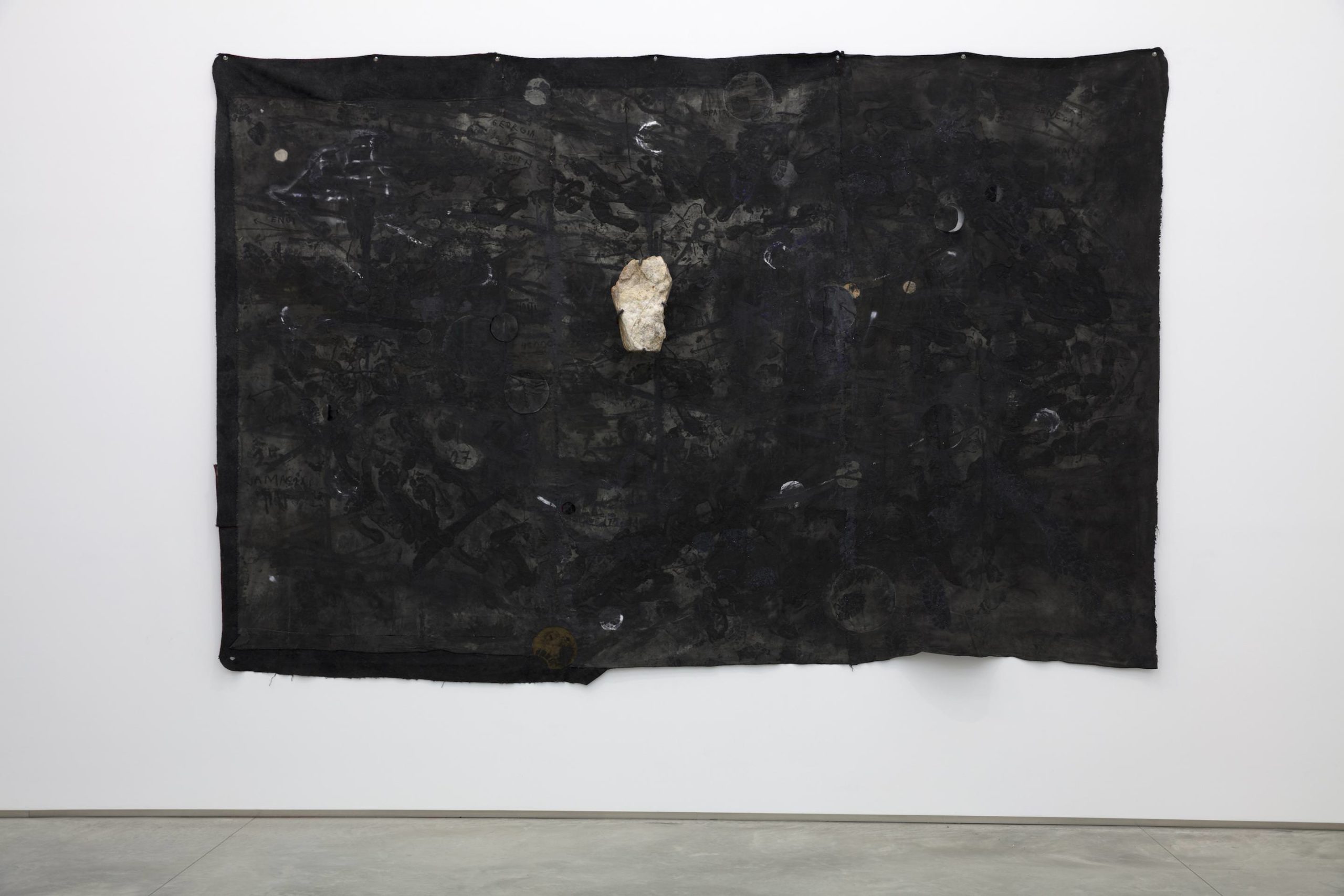
RADCLIFFE BAILEY
Rocking
2014
Mixed media including black sand on canvas tarp and a rock
114 1/2 x 170 1/2 x 14 inches
Courtesy of Jack Shainman Gallery
RB: My practice has remained consistent throughout the years. As I’ve always had one foot in the past, I always have one foot in the present. The present in the sense that I explore entities that are very surreal; such as the surreal concepts that we’re dealing with today politically, but also spiritually for me. I’m trying to understand that faith is not necessarily tangible. My practice today is really in that space.
WW: Along those lines, could you tell us about the most recent work in the show and how that is representative of your studio practice today?
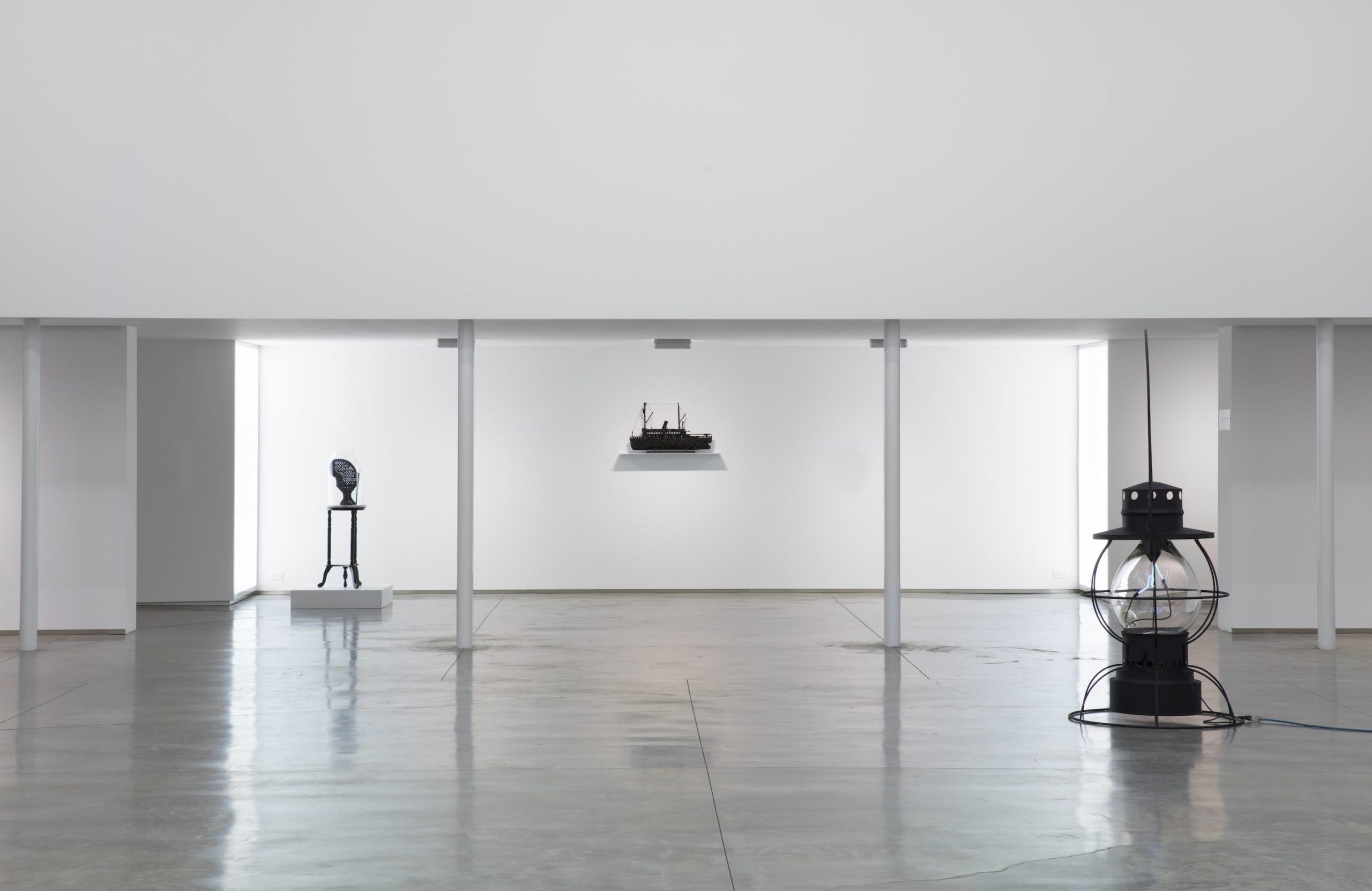
Installation view of “Travelogue” at The School
Courtesy of Jack Shainman
RB: The most recent work is a piece called Upwards. That piece is inspired by the Kongo cosmogram—a crossroads between North, South, East, and West. The work inquires into travel, so there’s a railroad track that runs across the top, middle, as well as the other intersections of the tarp. There are counter clockwise traces, as in the Kongo cosmogram, and also references to my family members migrating from the South to the North as a part of the Underground Railroad. The piece also deals with ascension and travel upwards in a surreal way. The tarp is a shipping tarp and resembles a constellation with its surface stitches.
WW: The concept of travel also relates to the sonic work that’s on the lawn. Could you talk about that?
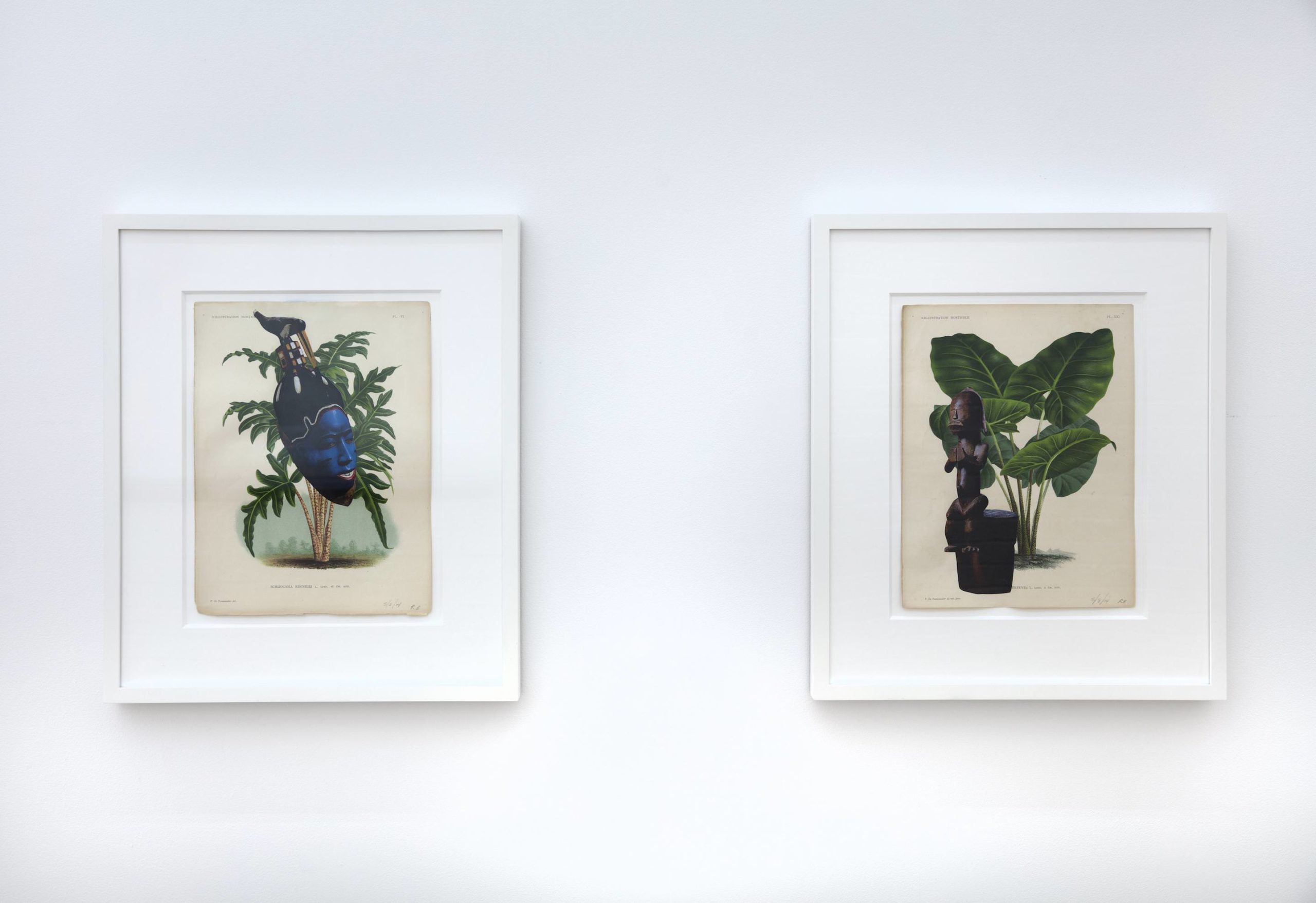
RADCLIFFE BAILEY
Notes from Tervuren
2014
Gouache, collage, and ink on paper
14 x 10 3/4 x 1 1/2 inches
Courtesy of Jack Shainman Gallery
RB: That piece is called Vessel and was created for and commissioned by Prospect New Orleans this past Fall. It could be shown anywhere, but for its initial installation, it was located between the Mississippi River and a railroad track. I worked with a young musician, Okorie Johnson, to create a soundtrack, which sonically represents past, present, and future. It had the sounds of a railroad track, sounds of the ocean, sounds of a burning fire in the background; you can hear sounds of dogs. It was recorded during a full moon. I worked with architect friends of mine, Mack Scogin and Merrill Elam, to engineer the piece, which is made with steel.
WW: How do you want your work to interact with the unique architecture and history of the school?
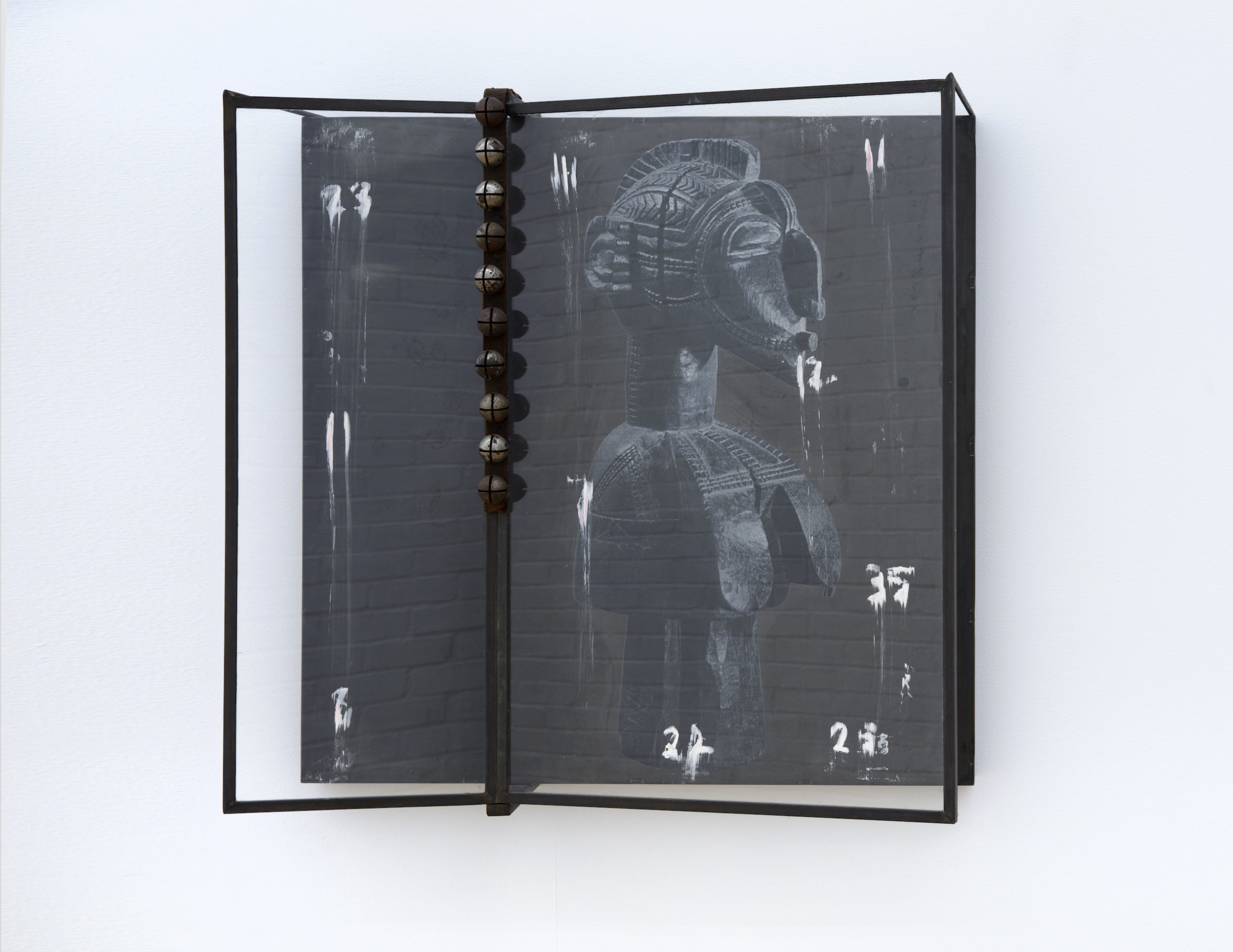
RADCLIFFE BAILEY
Currency
2011
Printed photograph on steel, glass, and bells
30 1/2 x 30 1/2 x 11 inches
Courtesy of Jack Shainman Gallery
RB: Speaking of working with architecture, I’ve always pictured my work in a space that dealt with space. I’ve always wanted to make work in reaction to an architectural space just as I react to spaces that are public, outdoor, and not traditional. For The School to have a history as just that was perfect for me.









